Magnificent Magnolias

There can be no doubt that when it comes to flowering trees that also have fragrance, the magnolia trees tops the list.
With its creamy white flowers and a fragrance reminiscent of citrus, magnolia is one of the most popular of all trees.
Magnolia is a truly American tree, native throughout the Southeast and as far west as Texas.
It is a native in Florida, too, as far south as Orlando. And although not found in the wild along the Space Coast, planted magnolias grow and flourish all the way into the Miami area.
How To Grow Magnolias
Because their natural habitat is alluvial _ that is, they live and thrive on riverbanks, and in naturally low-lying areas _ magnolias will grow best if given conditions similar to their natural habitat. That means rich, moist soil that contains plenty of organic matter.
In our landscapes, this is best accomplished by adding peat or cow manure or some of the commercial potting mixes, or a combination of all of these, to the hole at planting time.
They are also very salt-tolerant and can grow beautifully on the barrier island. It’s probably even more important to give young trees a healthy dose of dark, rich, organic soil on the island since it is so sandy there.
Once established, magnolia is quite drought-tolerant, but young trees will definitely benefit from regular watering. Newly planted trees should be watered at least once a day for the first two weeks, and two-three times weekly, for about the next month.
Care For Magnolia Trees
Magnolia is an acid-loving tree and will respond well to feeding with an acid-type of fertilizer, usually labeled for azaleas and gardenias. In rich soil, magnolias can even be fed with plain old 6-6-6.
Older trees that look healthy will have enough of a root system to be able to take up all the nutrients they need without additional feeding. Trees that are not at their prime, should get acid food.
A healthy magnolia tree has very dark, shiny leaves that shimmer in the sun; unhealthy trees look dull and lighter green.
When they bloom, magnolias are a sight to behold. Starting about the first of April, they will continue to flower through the end of May. The flowers are huge _ as large as 8 or 10 inches across _ and a waxy white with a creamy hue.
The smell of a magnolia tree flower is so light, so aromatic, and so wonderfully pleasing, that it is no wonder they are so popular.
I was doing a landscape job at a house with a magnolia tree in the yard and every time I went past, I stopped to take a whiff.
In the fall, the seeds mature in a brown cone that, as it dries, hardens and then spits out seeds that hang on thin threads. The seeds are bright red and a favorite of wildlife.
The cones are a real hassle for the person mowing the lawn, though. I liken them in shape and hardness to hand grenades! I highly recommend that they be picked up before mowing.
Magnolia is an evergreen tree but they do drop a number of leaves in the fall, along with the cones. The leaves are large, up to 10 inches long, and can also create a certain amount of maintenance.
Plant magnolia with plenty of room for them to grow. Although in their natural habitat magnolia can reach upward of 100 feet tall, they don’t get that big in these parts.
Still, they can become very large. They grow in a thick, pyramidal shape, so they tend to spread their lower branches quite a good distance.
Obviously, since they grow all the way up the eastern seaboard, magnolia is highly cold tolerant and never will be damaged by whatever cold weather we experience here.
Regarded by many garden experts as the aristocrats of landscape plants, magnolias have a long history of cultivation.
There is a record of them being used extensively in gardens as early as A.D. 650, when Buddhist monks planted Magnolia denudata, with its striking white flowers, at temples to symbolize purity.
English garden guru Christopher Lloyd considers magnolias “the most glamorous and effective of all shrubs or trees. There is room for at least one specimen in every garden.”
Ted Horsey, a retired Vancouver barrister, has made a study of magnolias as part of his two-year training in horticulture at Kwantlen College.
At 60, Horsey decided he had achieved all he wanted to do as a lawyer and decided to devote his energies to horticulture.
One of the top new books on the subject is The World of Magnolias by Dorothy J. Callaway (Timber Press.)
Here are six of the best magnolias, according to Horsey:
-
Siebold’s Magnolia (Magnolia sieboldii):
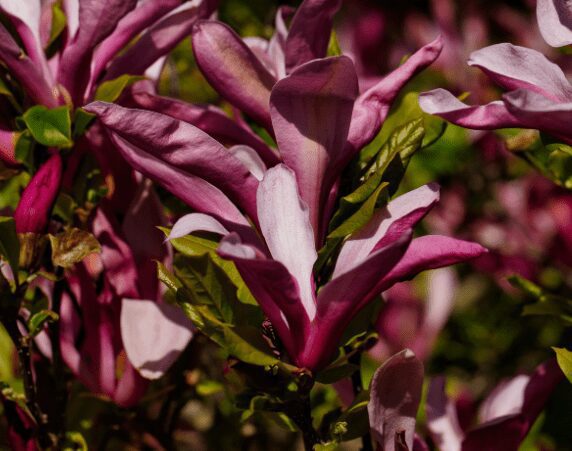
A deciduous tree/shrub that grows to a height and spread of 18 feet (6 metres) and flowers all summer. The flowers are pristine white, cup-shaped to a width of four inches (10 centimetres) with crimson centres. Highly fragrant.
-
Southern Magnolia (M. Grandiflora):
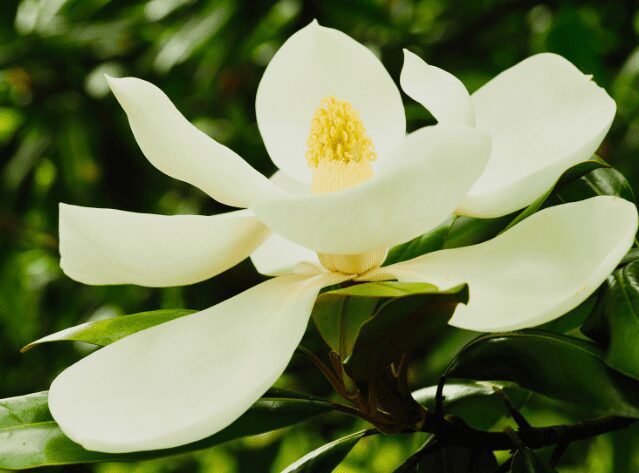
A broadleaf evergreen tree that grows to a height of 60 feet (20 metres) and a spread of 45 feet (15 metres) and blooms all summer. Leaves are large with a waxy, dark-green surface and a rusty indumentum on the underside. The huge, creamy-white flowers are very fragrant.
This is one of the few magnolias to survive the ice age in North America. None survived in Europe.
-
Saucer Magnolia (M. x soulangiana):
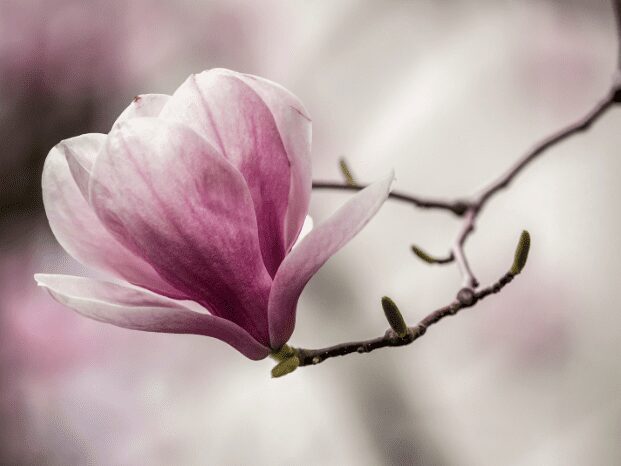
The most common magnolia in B.C., it is often wrongly called the Tulip Tree. Spectacular, it grows to a height of about 30 feet (10 metres) and a spread of 25 feet (eight metres.) In late spring, it is covered for about three to four weeks with large, white, maroon-edged blossoms about six inches (15 centimetres) in diameter.
-
Star Magnolia (M. stellata):
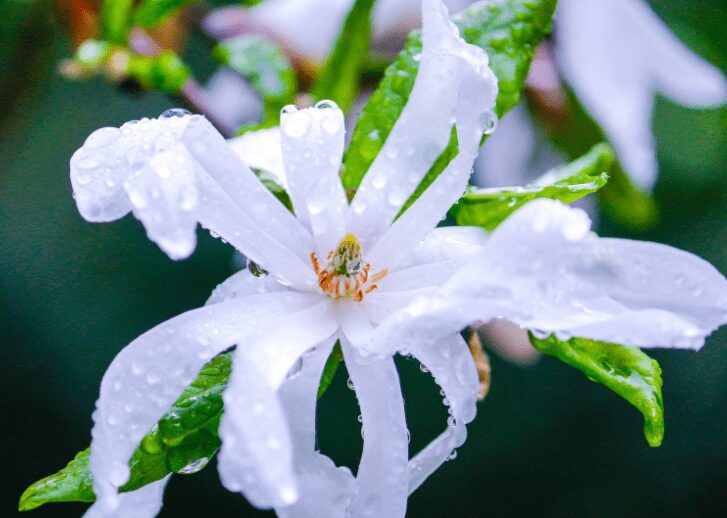
Similar to the saucer magnolia, this is smaller, shrubbier and blooms about three weeks earlier. Its flowers are slightly smaller and usually pure white. Look for the most attractive blush-pink cultivar M. `Rosea.’
-
Kobus Magnolia (M. Kobus):
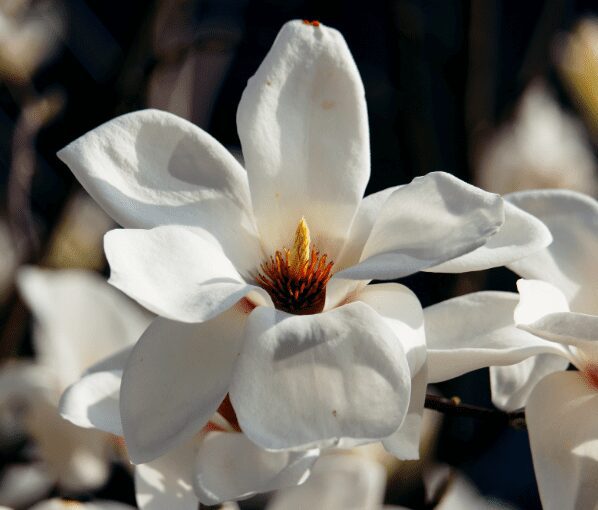
White flowering, this grows to a height of about 30 feet (10 metres). Its branches are not contorted and its spread is slightly less than the saucer magnolia.
- Leonard Messel Magnolia (M. x losbneri `Leonard Messel’):
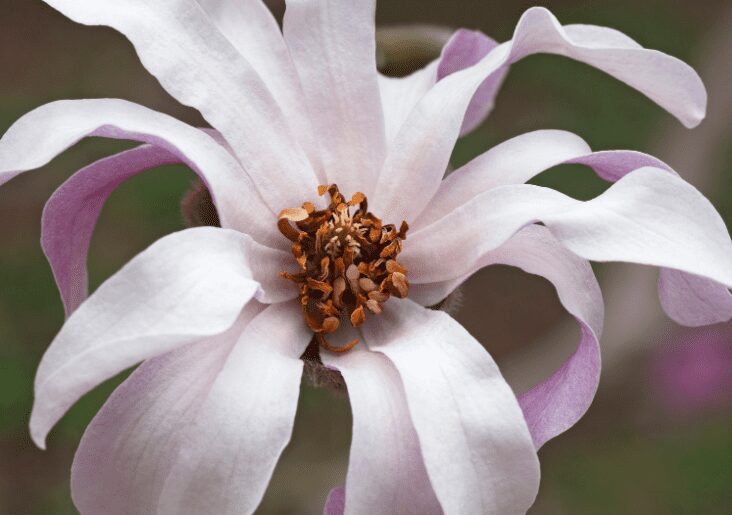
With pure-pink flowers in March, this is more spectacular than any of the other pink ornamental trees. It grows to 25 feet (8 meters) in height and 20 feet (6 meters) in width.
Final Tips On Magnolia Trees
- Older trees that look healthy will have enough of a root system to take up all the nutrients they need without additional feeding. Trees that are not at their prime should get acid food.
- A healthy magnolia has dark, shiny leaves that shimmer in the sun; unhealthy trees look dull and lighter green.
- When they bloom, magnolias are a sight to behold. Starting about the first of April, they will continue to flower through the end of May. The flowers are colossal _ as large as 8 or 10 inches across _ and a waxy white with a creamy hue.
- The smell of a magnolia flower is so light, so aromatic, and so wonderfully pleasing that it is no wonder they are so popular.
- In the fall, the seeds mature in a brown cone that, as it dries, hardens and then spits out seeds that hang on thin threads. The seeds are bright red and a favorite of wildlife.
- The cones are a hassle for the person mowing the lawn. I liken them in shape and hardness to hand grenades! I highly recommend that they be picked up before mowing.
- Magnolia is an evergreen tree, but they drop many leaves in the fall and the cones. The leaves are large, up to 10 inches long, and can also create a certain amount of maintenance.
- Plant magnolia with plenty of room for them to grow. Although magnolia can reach upward of 100 feet tall in their natural habitat, they don’t get that big in these parts.
- Still, they can become huge. They grow in a thick, pyramidal shape, so they spread their lower branches quite a reasonable distance.
- Since they grow up on the eastern seaboard, magnolia is highly cold tolerant and never will be damaged by whatever cold weather we experience

























